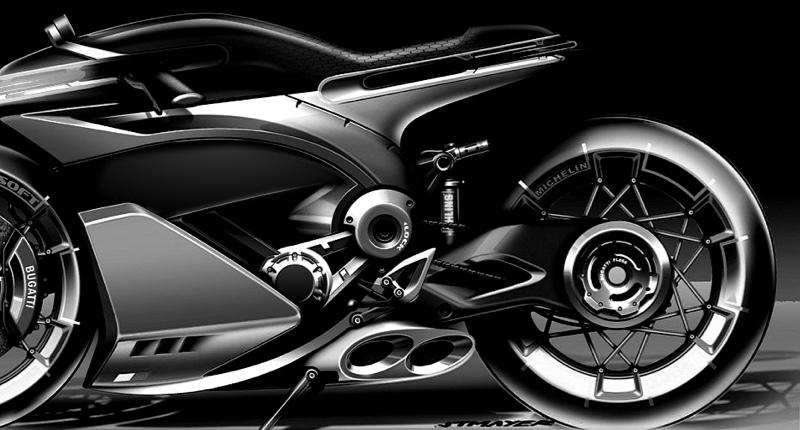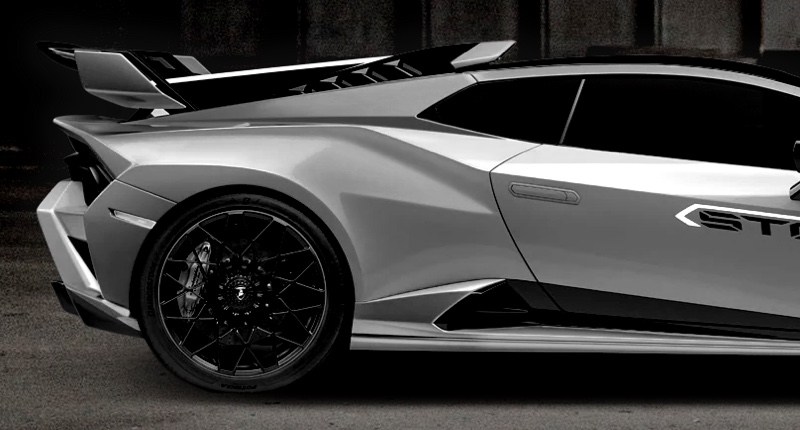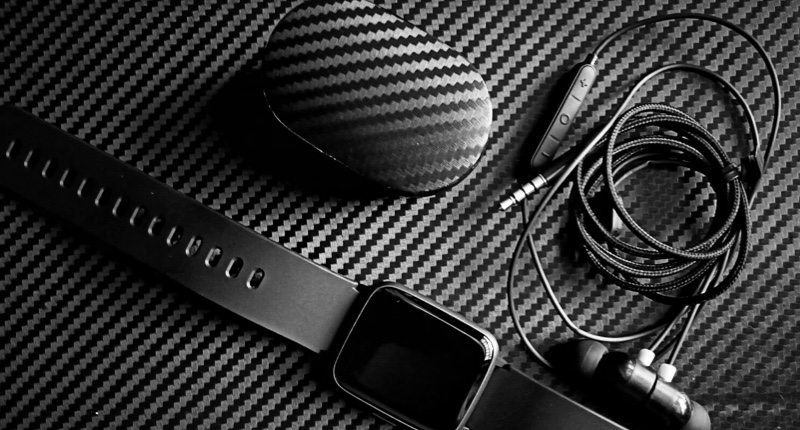Custom Carbon Fiber Parts for Aerospace Applications: Design, Production, and Certification
- Custom Carbon Fiber Parts for Aerospace Applications: Why They Matter
- Lightweight performance that reduces operating costs
- Strength, stiffness, and design freedom for mission-critical parts
- Supreem Carbon: Capabilities for aerospace-focused customization
- Design Considerations for Custom Aerospace Carbon Fiber Parts
- Material selection and property targets
- Layup, ply orientation, and laminate design
- Interfaces, fasteners, and bond lines
- Manufacturing Processes and Quality Controls
- Common manufacturing routes for aerospace carbon fiber parts
- Traceability, process control, and documentation
- Testing and nondestructive inspection (NDI)
- Regulatory, Certification, and Supply-Chain Requirements
- Aerospace certifications and standards
- Environmental and safety requirements
- Cost, Lead Time, and Production Scalability
- Cost drivers for custom aerospace carbon fiber components
- Lead time and ramp-up strategy
- Material Comparison: Carbon Fiber Composites vs. Common Metals
- Notes on the comparison
- How Supreem Carbon Supports Aerospace Projects
- Custom tooling, prototyping, and small-batch production
- Quality systems and documentation readiness
- Conclusion: Selecting a Partner for Custom Carbon Fiber Parts for Aerospace Applications
- Choose a supplier who can combine engineering, controlled manufacturing, and documentation
- Frequently Asked Questions
- References and Sources
Custom Carbon Fiber Parts for Aerospace Applications: Why They Matter
Lightweight performance that reduces operating costs
Custom Carbon Fiber Parts for Aerospace Applications offer dramatic weight savings compared with traditional metals, translating directly into lower fuel consumption and improved range for aircraft. Aerospace operators and OEMs looking for commercial-grade carbon fiber components seek suppliers who can deliver repeatable mechanical properties, traceability, and certification-ready manufacturing processes.
Strength, stiffness, and design freedom for mission-critical parts
Compared to conventional materials, aerospace-grade carbon fiber composites deliver exceptional strength-to-weight and stiffness-to-weight ratios, enabling optimized structures (e.g., control surfaces, fairings, interior structural components) with complex geometries. For custom aerospace parts, tailoring fiber architecture, resin systems, and layup sequences enables designers to meet tight performance and fatigue requirements.
Supreem Carbon: Capabilities for aerospace-focused customization
Supreem Carbon, established in 2017, is a manufacturer specializing in custom carbon fiber parts for automotive and motorcycle markets and is well positioned to expand into aerospace-grade component manufacturing. With a 4,500 m2 facility, 45 skilled production and technical staff, an annual output value around $4M, and more than 500 customized carbon fiber parts in its catalog, Supreem Carbon combines R&D, design, production, and sales capabilities to support low- to medium-volume aerospace projects that require customization and rapid iteration.
Design Considerations for Custom Aerospace Carbon Fiber Parts
Material selection and property targets
Selecting the right carbon fiber type (e.g., standard modulus, intermediate modulus, or high-modulus) and matrix system (e.g., epoxy prepreg, toughened resin systems) is the first step to meet tensile strength, fatigue life, and temperature resistance targets. Designers must define performance goals, allowable weight, environmental exposure (UV, moisture), and required fire/smoke/toxicity (FST) ratings to choose appropriate materials.
Layup, ply orientation, and laminate design
Custom carbon fiber parts for aerospace applications rely on engineered ply stacks. Optimizing ply orientation (0°, ±45°, 90°) and using automated fiber placement (AFP) or hand layup for complex contours controls stiffness, strength, and damage tolerance. For thin skins and stiffeners, designers balance buckling resistance and delamination resistance through careful laminate sequencing.
Interfaces, fasteners, and bond lines
Integration points must be designed for bearing loads and load transfer. When designing custom parts, consider reinforced inserts, co-cured or secondary bonded joints, and proper edge treatments to avoid stress concentrations. Aerospace applications often favor bonded joints with validated adhesives coupled with mechanical retainers where redundancy is required.
Manufacturing Processes and Quality Controls
Common manufacturing routes for aerospace carbon fiber parts
Prototyping and production of custom aerospace parts typically use prepreg/autoclave curing for high-performance parts, resin transfer molding (RTM) for repeatable medium-volume components, and automated fiber placement for large or contoured structures. Vacuum-bag-only tooling and out-of-autoclave (OoA) epoxy systems may be chosen for lower-cost, lower-temperature components.
Traceability, process control, and documentation
Aerospace buyers require full material traceability, batch records, process parameter logs, and non-conformance procedures. A certified supplier must control raw material lot numbers, cure cycles, autoclave charts, and maintain calibration records for measurement equipment. Supreem Carbon’s integrated R&D and production structure supports establishing such documentation for customized orders.
Testing and nondestructive inspection (NDI)
Typical quality controls include ultrasonic C-scan, tap testing, thermography, and dye-penetrant checks on metallic inserts. Mechanical testing (tension, compression, shear, and fatigue) on representative coupons and full-scale parts validates performance. Suppliers targeting aerospace markets should support required test reports and sampling plans to meet OEM and regulatory expectations.
Regulatory, Certification, and Supply-Chain Requirements
Aerospace certifications and standards
To supply Custom Carbon Fiber Parts for Aerospace Applications, manufacturers must follow industry standards and supplier quality systems, commonly AS9100 for quality management and NADCAP for special processes (e.g., composite curing, NDI). Compliance with customer-specific specifications, FAA/EASA airworthiness requirements, and OEM quality clauses is typically required.
Environmental and safety requirements
Aerospace parts often have FST (fire, smoke, toxicity) requirements for interior components and exposure limits for exterior structures. Material certification, resin system FST data, and documented risk assessments help ensure parts meet in-service environmental and safety requirements.
Cost, Lead Time, and Production Scalability
Cost drivers for custom aerospace carbon fiber components
Key cost drivers include raw material choice (prepreg vs. dry fiber), tooling complexity, curing method (autoclave vs. OoA), inspection intensity, and certification testing. Early-stage prototyping typically costs more per unit than mature production runs; however, custom design optimization can reduce part count and overall lifecycle costs for the aircraft.
Lead time and ramp-up strategy
Typical lead times for custom parts range from weeks for simple prototypes using vacuum-bagged tooling to several months for fully certified, autoclave-cured components with full testing and documentation packages. Suppliers like Supreem Carbon can execute rapid prototyping and pilot runs and scale to medium-volume production depending on customer needs.
Material Comparison: Carbon Fiber Composites vs. Common Metals
| Property (typical) | Carbon Fiber Composite (CFRP) | Aluminum 7075 | Titanium Ti-6Al-4V |
|---|---|---|---|
| Density (g/cm³) | ~1.5–1.7 | ~2.81 | ~4.43 |
| Tensile Strength (MPa) | ~600–1500 (laminate dependent) | ~572 | ~900 |
| Engineering Modulus (GPa) | ~70–150 (orientation dependent) | ~71 | ~110 |
| Typical Use Cases | Lightweight structures, fairings, control surfaces | Fuselage frames, fittings | High-load fittings, landing gear parts |
Notes on the comparison
The values above are representative ranges. CFRP properties vary widely with fiber type, resin, and ply architecture. For design and certification, use supplier-specific material datasheets and validated test data.
How Supreem Carbon Supports Aerospace Projects
Custom tooling, prototyping, and small-batch production
Supreem Carbon’s R&D and production capabilities support prototype iterations, custom tooling, and small-batch production runs. For aerospace customers exploring carbon fiber solutions, Supreem can provide design-for-manufacture feedback, prototype components, and transition to repeatable production while documenting processes for supplier approval.
Quality systems and documentation readiness
While Supreem Carbon currently specializes in automotive and motorcycle carbon fiber products, the company’s integrated approach (R&D, design, production) and established traceability practices form a foundation to adopt aerospace-quality standards such as AS9100 and NADCAP for specialized processes when engaged by aerospace customers.
Conclusion: Selecting a Partner for Custom Carbon Fiber Parts for Aerospace Applications
Choose a supplier who can combine engineering, controlled manufacturing, and documentation
Successful aerospace carbon fiber projects depend on materials expertise, rigorous process control, and proven testing/inspection. For OEMs and tier suppliers seeking Custom Carbon Fiber Parts for Aerospace Applications, evaluate potential partners on material transparency, inspection capability, certification readiness, and experience delivering documented lot traceability. Supreem Carbon’s manufacturing footprint and catalog of customized parts make it a viable partner for prototyping and medium-volume aerospace projects, with pathways to full aerospace certification when required.
Frequently Asked Questions
Q: What makes carbon fiber preferable to metal for aerospace parts?A: Carbon fiber provides a superior strength-to-weight ratio and greater flexibility in shaping complex geometries, which reduces weight and fuel consumption. It also offers corrosion resistance and tailored stiffness, making it ideal for many aerospace components.
Q: Can Supreem Carbon produce parts that meet aerospace certification standards?A: Supreem Carbon currently has strong capabilities in custom carbon fiber manufacturing and documentation. To meet formal aerospace certifications (e.g., AS9100, NADCAP), Supreem can implement required quality-system upgrades and process qualifications in collaboration with customers.
Q: What are typical lead times for custom aerospace carbon fiber parts?A: Lead times vary by complexity: simple prototypes can be delivered in a few weeks, while fully tested and documented parts for certification can take several months. Early engagement helps optimize timelines through parallel design and testing activities.
Q: How is traceability handled for aerospace-grade composite parts?A: Traceability includes lot-controlled raw material records, laminate layup documentation, cure-cycle records, NDI results, dimensional inspection reports, and final part serial numbers. All records are retained per contractual or regulatory requirements.
Q: What testing is required for aerospace carbon fiber components?A: Common requirements include material coupon testing (tension, compression, shear, and fatigue), non-destructive inspection (ultrasonic C-scan, thermography), environmental exposure tests, and mechanical testing of representative assemblies.
References and Sources
- Hexcel and Toray technical datasheets (carbon fiber and prepreg properties)
- MatWeb material property database (aluminum and titanium typical properties)
- ASM International, Handbook of Composite Materials
- FAA and EASA advisory material on supplier qualification and material traceability
- Industry guidance on AS9100 and NADCAP requirements (SAE International and IAQG)
- Supreem Carbon company information and capabilities (company-provided brief)

The Ultimate Guide to Carbon Fiber Motorcycle Fairings: Benefits, Installation, and Maintenance
Best professional carbon fiber rods manufacturers and supplier brands

The Ultimate Guide to Custom Carbon Fiber Hood Fabrication

The Ultimate Guide to Carbon Fiber for Motorcycles
For Customized Service
What custom customer need to prepare?
1. Send Your Design/Idea/3D drawing.
2. Supplier Quotation Confirmation.
3. Firts Sample Feedback.
For Facotry
How many employees of Supreem carbon?
We have over 50 employees, including over 40 skilled workers, 3 R&D designers, and 5 QC professionals and so on.
How many monthly production capacity of the factory?
The average monthly production capacity reach 3000 pieces. With the equipment upgrade, it will be increased over 4000 pieces per month.
Supreem carbon main competitive advantages.
Rich experience
Over 10 years production experience in carbon fiber industry, providing customers with high quality carbon products.
Excellent service
From new project development to customer finished product delivery, we provide customers with full tracking and timely feedback on project progress.
High-Quality Products
Our carbon fiber products undergo rigorous quality control to ensure customers achieve the high quality and cost-effective product.
For Products
Are you parts have UV protected?
Absolutely! We use multiple layers of premium quality automotive clear (or matt) coats on our products, which ensure that they will remain super pretty for years to come.

Yamaha R1 Carbon Fiber Side Fairings
Introducing the Supreem Carbon Fiber Long Side Panels for Yamaha R1. Crafted with precision and expertise, this front side fairing is designed to elevate the performance and aesthetics of your R1. Made from high-quality carbon fiber, this fairing is not only lightweight but also incredibly durable, providing optimal protection for your motorcycle.

Yamaha R1 Carbon Fiber Airbox Tank Cover
The Supreem Carbon Yamaha R1 Carbon Fiber Airbox Tank Cover provides lightweight, durable protection with a sleek finish. Designed for R1 models, it enhances the style and performance of your bike. Its lightweight structure improves performance while maintaining the premium aesthetics necessary for high-end modification projects. As a dedicated manufacturer of carbon fiber parts, we provide stable production capacity, customization options, and strict quality control to support enterprise-level procurement and OEM/ODM needs.

Carbon Fiber Rear Seat Panel for BMW S1000R & M1000RR – Lightweight Performance
This carbon fiber rear seat panel is engineered for the BMW S1000R and M1000RR, offering superior rigidity, reduced weight, and a premium racing finish. Produced with autoclave technology and strict QC standards, the part ensures consistent OEM-level fitment. Supreem Carbon provides wholesale supply, stable bulk production, and customized solutions for global clients.

High-Performance Carbon Fiber Rear Undertail for BMW S1000R
Engineered for distributors, tuning brands, and motorcycle accessory businesses, the BMW S1000R Carbon Fiber Rear Undertail is a high-quality, durable, lightweight carbon fiber upgrade for the S1000R platform. This component is manufactured using aerospace-grade carbon fiber and precision molds to deliver superior stiffness, a seamless OEM-level fit, and a premium visual finish suitable for high-end aftermarket applications.
© 2024 Supreem Carbon All Rights Reserved.





Facebook
Pinterest
LinkedIn
Instagram